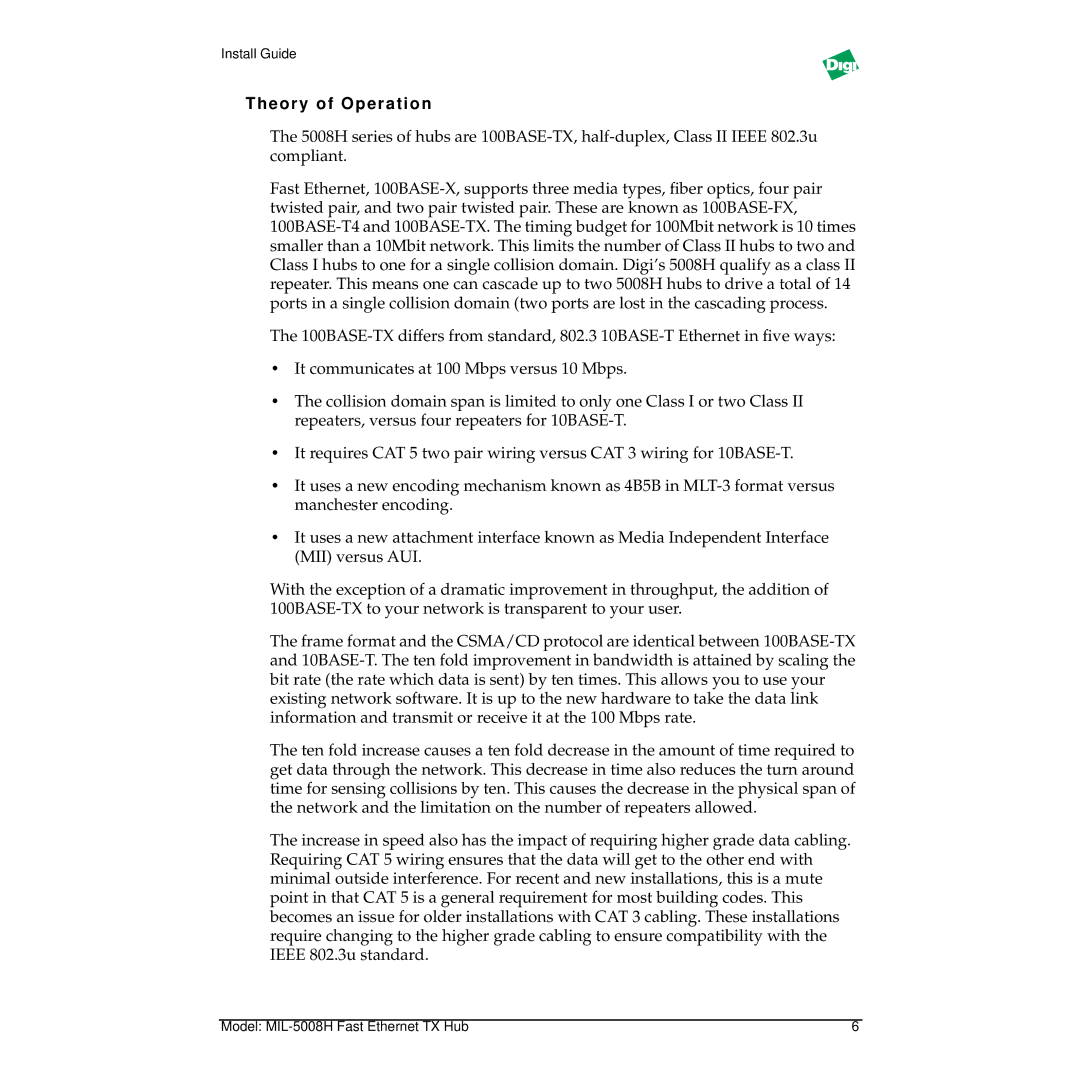Install Guide
Theor y of Operation
The 5008H series of hubs are
Fast Ethernet,
The
•It communicates at 100 Mbps versus 10 Mbps.
•The collision domain span is limited to only one Class I or two Class II repeaters, versus four repeaters for
•It requires CAT 5 two pair wiring versus CAT 3 wiring for
•It uses a new encoding mechanism known as 4B5B in
•It uses a new attachment interface known as Media Independent Interface (MII) versus AUI.
With the exception of a dramatic improvement in throughput, the addition of
The frame format and the CSMA/CD protocol are identical between
The ten fold increase causes a ten fold decrease in the amount of time required to get data through the network. This decrease in time also reduces the turn around time for sensing collisions by ten. This causes the decrease in the physical span of the network and the limitation on the number of repeaters allowed.
The increase in speed also has the impact of requiring higher grade data cabling. Requiring CAT 5 wiring ensures that the data will get to the other end with minimal outside interference. For recent and new installations, this is a mute point in that CAT 5 is a general requirement for most building codes. This becomes an issue for older installations with CAT 3 cabling. These installations require changing to the higher grade cabling to ensure compatibility with the IEEE 802.3u standard.
Model: | 6 |
